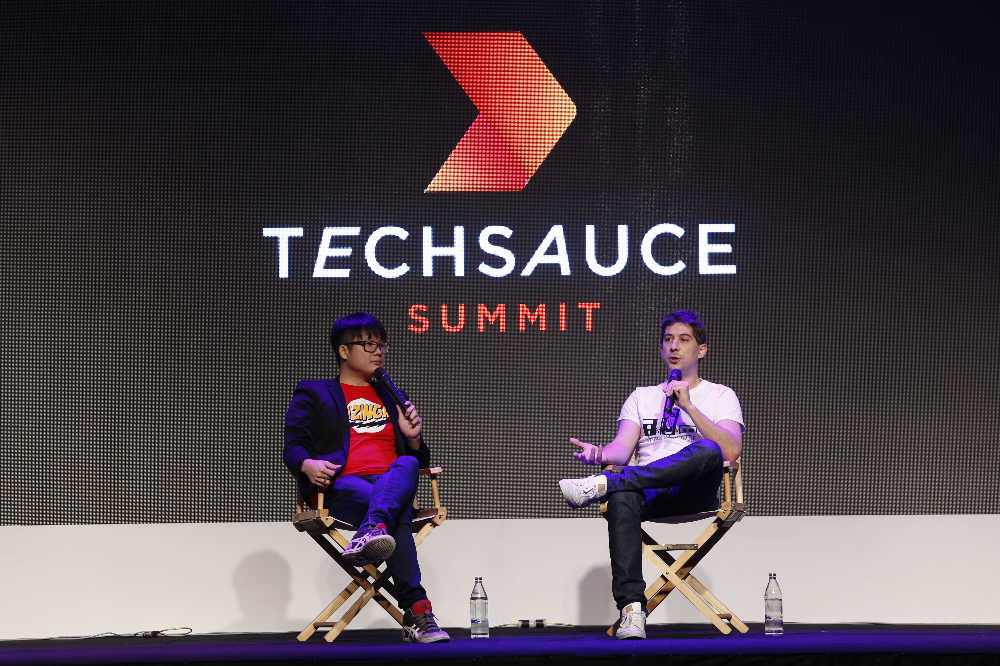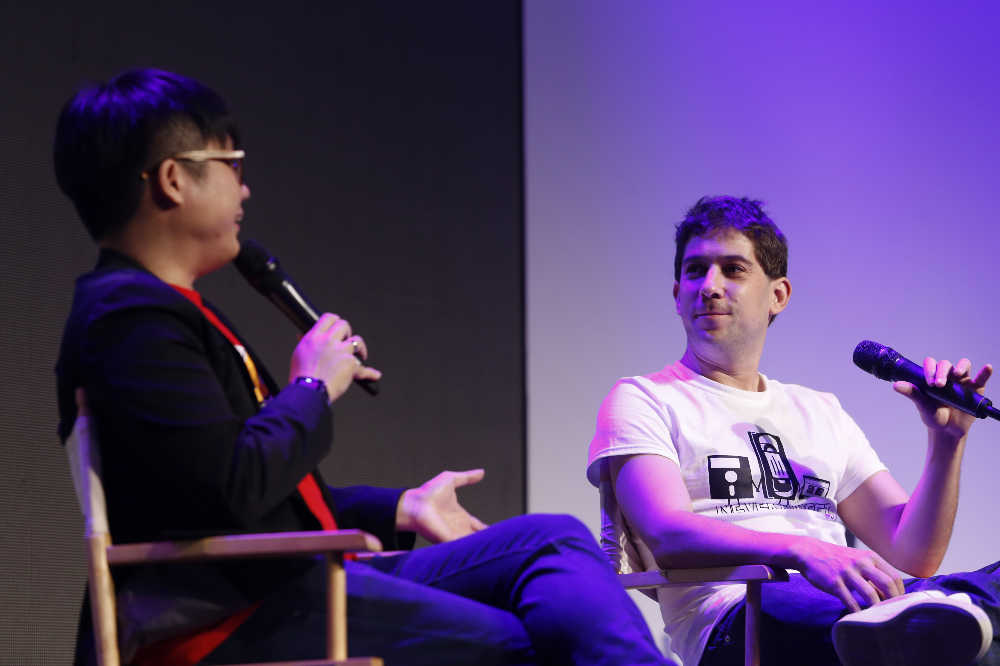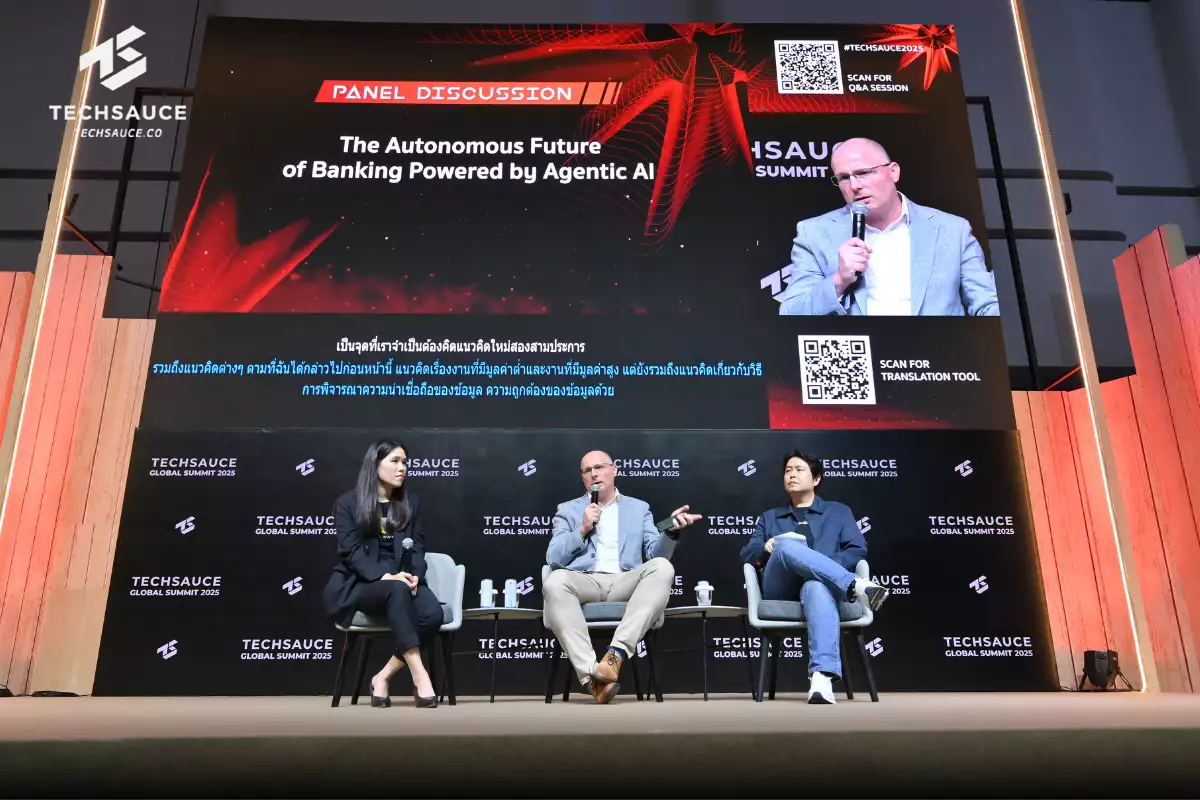10 Practical Secrets to Help You Conquer Your B2B Space Today
You don’t have to strike around blindly hoping for success. There’s actually a few things you can do right today if you want to make it big in a B2B space. Here we bring you 10 practical strategies to conquer your B2B space, as shared by Tikhon Bernstam – founder of the world’s largest document-sharing website Scribd and cloud-based mobile development platform Parse, upon which hundreds of thousands of apps are built. In his fireside chat with us during Techsauce Summit 2016, he gave these practical tips on how he did it and exactly what YOU can do today to make your B2B startup the biggest in what it does. Are you ready? Here goes…
PART 1: The Business Planning Stage
The case for B2B: “…200 paying customers, i.e. small businesses paying you $40 a month, that’s $100,000 per year.”
Tip #1: Do the math!
As Tikhon concisely states it, if you can get 200 paying customers, i.e. small businesses paying you $40 a month, that’s $100,000 per year. Two thousand customers paying $40 a month, that’s a million dollars per year. He suggests, “If it’s hard to raise money, then be a company that makes money – instead of giving away a product. In Thailand, it’s harder to raise money than it is if you’re based in San Francisco, so optimize around your constraints. There’s lots of problems you can solve that will bring you 200 or 2000 customers.” Which brings us to Tip #2.
Tip #2: Figure out who will actually pay for your product.
Where are you going to get your money? Tikhon emphasizes that it’s really important to know who your customer is and to know who’s going to pay:
- Who in an organization is actually going to pull out their credit card and pay you? - Who gets promoted by using your product or service? - Who makes more money by using your service?
“If you can’t answer those questions then you’re probably in trouble,” he says.
Tip #3: Start small and work your way up.
"A lot of good B2B companies start off learning in the SME space with a lot of small to medium-sized businesses who are in fact terrible customers because they go out of business too fast; they churn, they stop paying their bills – but these startups learn what to build and then they go up market," says Tikhon.
He gave the example of Workday – a company with 500 customers worth 18 billion USD. “The Fortune 500, those are people who can pay a lot of money for software,” he said. “Their sales force has contracts that are worth north of 10 million USD a year just from individual companies. So tally the number of customers that you need – it’s very small when you go up market.”
Another example is Box.com, which lost a lot of money when they were B2C and doing small and medium businesses. But now they make all their money from huge companies. Soon, predicts Tikhon, they’ll be making at least a billion dollars in ARR (annual recurring revenue).
“[The big] customers never churn. They never complain. They never don’t pay you,” he said. “And although the sales cycle can be longer, you can learn what to build by dealing with the small and medium-sized businesses. A great company I like called Rainforest QA – all they do is they’re your QA as a service. If you’re a company like Zenafits or Nike and you want to ship a new version, they just have real humans go and test out all your clothes, try to sign up, try to pay on your new build – they’re trying to replace your QA department. Today, they’re signing million dollar contracts – but they started off selling to small and medium startups and learning what to build and what the problems are. Now, they don’t even serve startups anymore.”
PART 2: The Product Testing Stage
Tip #4: Validate your ideas early on by talking with customers.
“With Scribd, we wasted 2 years building stuff that nobody wanted,” Tikhon recalls. He says a lot of developers prefer to “build stuff” than talk to customers – “it’s easier than having hard conversations where no one wants what you’re making.”
Instead of spending precious time writing code for programs that no one wants, he emphasizes the importance of not only validating but getting customers to sign on to your product or service early: “Go, talk to your customers, get them to sign letters of intent, LOIs, to pay you once you build your product. Give them half off, if they sign up early. Startups have a finite number of days until you run out of money and can’t afford to keep going. So you need to validate your ideas as quickly as possible. Don’t waste years like I did screwing around making things no one wants,” he warned.
Tip #5: Try making a fake landing page to figure out how desired your product actually is.
Instead of investing time making a website for a product you’re not certain your customers want, one of Tikhon’s smart strategies is to make use of fake landing pages. “At Unbounced.com, you can make a landing page in 5 minutes that provides you with email signups and a broken credit card form – see if anyone tries to actually pay you. If anyone actually tries to put in a credit card, that’s a really good sign,” he laughs. “You can actually validate many of your ideas ahead of time very simply with a fake landing page.”
Tip #6: Make your presence known on social media and in the forums.
When asked how he got the attention of giants like Facebook and Apple, Tikhon, now a giant himself, answered: “I spammed the hell out of Hacker News.”
For those of you who aren’t familiar with it, his quizzical answer refers to Hacker News, a social news website & forum focused to computer science and entrepreneurship run by Y Combinator. “I would write top 10 listicles, like ‘Top 10 Mistakes that Developers Make in Mobile Apps,’ and put that on Hacker News – then I’d have 20 friends upvote it. If it didn’t go viral, I would just go and write a script that would upvote it. If no one wanted to read it, I’d just make bots that wanted to read it,” Tikhon shared with his typical good humor.
Yes, that’s the kind of determination that’s needed, and it just proves that social media should be taken anything but lightly on your quest to make your B2B presence known!
PART 3: Other Useful Tips
Tip #7: Evaluate what software pains people on a daily basis – and build a fix.
One of the challenges faced by many startups and developers is what problems to solve for a B2B space. Tikhon suggests being very down-to-earth; you don’t have to look far for some of the best issues you can solve. “I think especially in B2B, you want what's called a founder-market fit,” he says. “You want someone who understands the problems in a specific market. What do marketers need in their emails, campaign or newsletter software? And you can either work in a company doing that sort of thing to understand the problems, or you can just go ask people.”
He drew examples of Apple staff, who can’t use sleek messaging apps specifically targeted to work teams (e.g., Slack) because they are forced to use iMessage for security reasons – “And they hate it,” claims Bernstam. “They can’t use Google Calendar because they’re scared Google is going to spy on them and so they use software that’s a step backward such as Outlook and Exchange. At Amazon, they also can’t use Slack or Google Docs, so they use terrible software. So you can just ask your friends at big companies, ‘What software do you use that sucks?’ Too often people say, ‘Let’s build a company that goes to Mars!’ No – just fix email, fix calendar software for businesses. Most software that we use sucks,” he pointed out. “So just take a look at the software that we use on a day-to-day basis. And the ones that make you want to facepalm and that are painful, just fix those. Stop going to Mars – start by making Bluetooth work in my car!”
Tip #8: Find a space that’s got a lot of players but who all have terrible products.
This, says Tikhon, is one of the simplest ways to get a strong product-market fit.
“As my friend Justin Kan says, as a startup you’re fighting against obscurity. Find a great market that is already large and has successful companies in it. Don’t create new markets; that’s really hard. Do what Dropbox did – find a space with lots of crappy companies that are successful. If you can find a market like file-sharing or file-backups that has lots of players that all have terrible products, that’s a great space to go into,” shares Tikhon. He also suggests a quick browse to the Inc. 5000 list of fastest growing private companies. “Take a look at crappy companies that have crappy products that are still successful and then just go make something good there,” he hilariously concluded.
Tip #9: Whatever you build, make sure it’s 10x better than everything else in the space.
In order to gain visibility from the big enterprises and make it known that you exist and have a solution for them to purchase, it’s certain you have to build a good product. “You have to build something that is 10x better than everything else in the space,” says Tikhon. “Like when Dropbox showed up, Mark Andreessen and Chris Dixon both passed on investing in that company because they said the space was too fragmented, too many players. There were public companies doing the same thing. But what Drew Houston (CEO of Dropbox) did is, he just built something that is 10x better than anything else in the space.”
He also draws secure file-sharing site Box as another example. The company went the other direction and built an enterprise product that had all the features desired by enterprises (e.g. compliance, audit and logging, etc) which turned out to be very rewarding.
“It’s boring-sounding stuff that companies will pay a ton of money for,” says Bernstam. “And so you can either make something that is 10x better for a niche or once you’ve struck a chord and you have something and you’ve got a good execution in a large market, you’re set because people will come to you and it will spread by word of mouth – or you can just do outbound sales like Box has done; Box and Rainforest both do same thing, they have lots of sales people who go out and close all those deals.”
Finally…that thing you’ve always wanted to do? That B2C space you have in mind? Tikhon has something to say about it as well.
Tip #10: Start off making money doing B2B – then you can do your dream of B2C.
“Many startup owners dream of doing B2C,” says Tikhon, who created Scribd (B2C) and Parse (B2B). But he says he really prefers the latter.
“I’ll never do B2C again. I also don’t invest in B2C. I don’t advise people to do B2C. There’s very few winners, percentage wise. For every Snapchat, for every Instagram, there are thousands of losers. It’s very hard to validate if something is going to work in B2C. I think too many young founders try a B2C because they haven’t worked in big companies and don’t know the problems they have. But it’s much easier to validate ideas in B2B and you could be making money on Day 1. My mistake with Parse was that initially it was B2D, business to developer, which is even worse than B2C. So, don’t sell to developers. All of Parse’s money was made from B2B, selling push notifications to marketers,” he reflected.
Bernstam’s final suggestion? “Don’t do B2C yet. Do B2C [after you’ve made a lot of money].” Start off small.
“Two thousand customers paying $40 a month is a million dollars per year! There’s lots of problems you can solve that will bring you 200 or 2000 customers – you can even make another email marketing tool for marketers, just like everyone else has done and make lots of money and then go do your Snapchat next time. Once you want to burn lots of money, then you can go try to start a B2C company,” he concludes.
ลงทะเบียนเข้าสู่ระบบ เพื่ออ่านบทความฟรีไม่จำกัด










